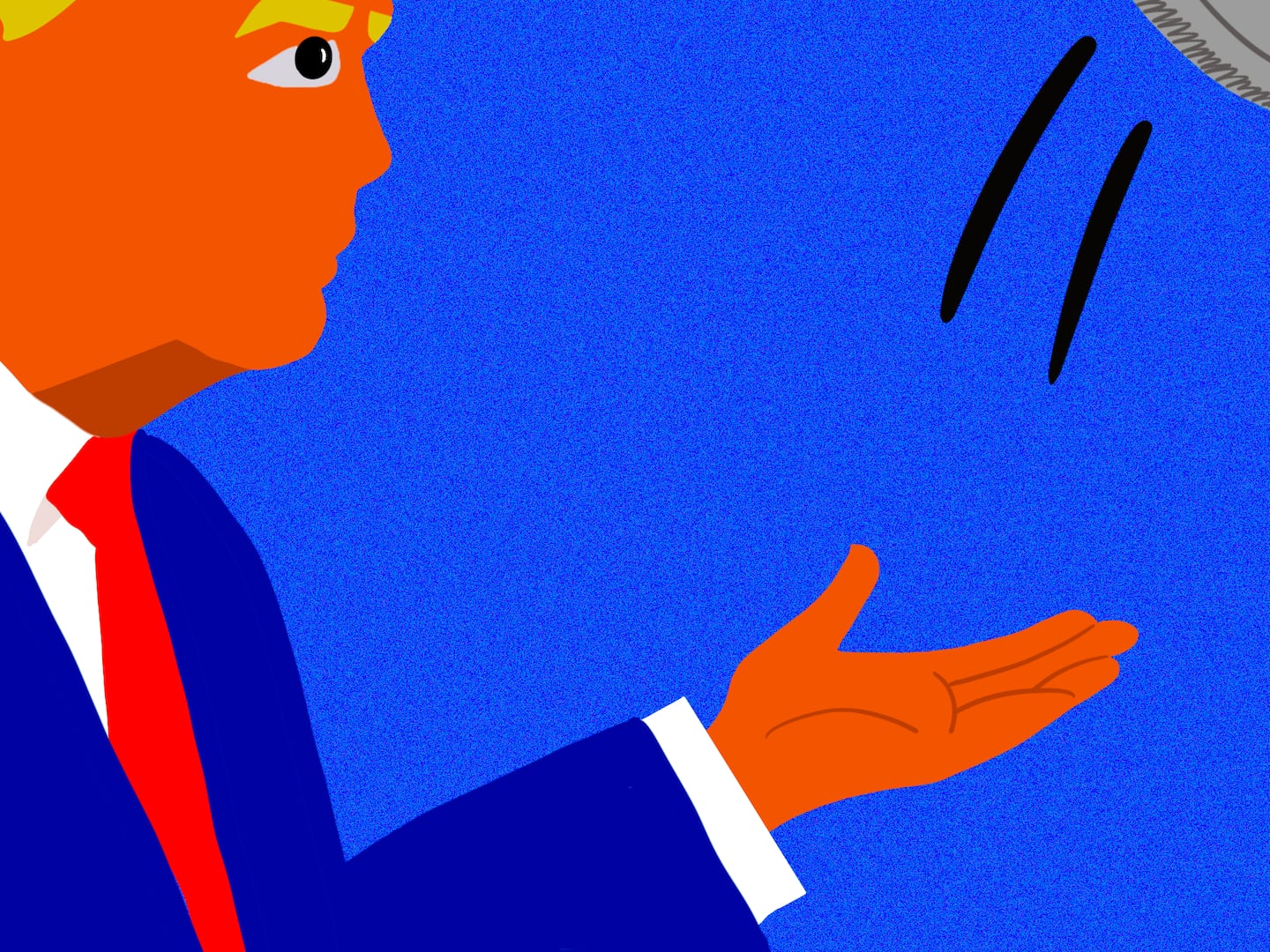Lawrence Wright expected backlash. He says he received several legal threats from the Church of Scientology during the two years he spent reporting Going Clear, a detailed account of the history of Scientology published on Jan. 17. Members of the church even called his Knopf editor at home, Wright says. Anticipating an onslaught of criticism from the church once the book was actually published, Wright purchased about 30 Internet domain names—but he didn’t think to scoop up one of the most obvious.
“Lawrencewrightgoingclear.com” surfaced last week, featuring a menacing-looking photograph of the soft-spoken Texan under the banner “How Wright Got It So Wrong.” In four separate sections, the website challenges details in Wright’s book. It reads almost exactly like an op-ed from the church submitted to The Daily Beast for publication a day earlier by Mike Sitrick, the Los Angeles spin doctor known for helping disaster-prone celebrities like Paris Hilton, Chris Brown, and Michael Vick clean up their public images.
Bylined by Karin Pouw, Scientology’s director of public affairs, the piece calls Wright’s book “blatantly bigoted,” and “filled with inaccuracies and misstatements of fact.” Pouw says these errors undermine the credibility of the book overall. “The point is if Mr. Wright got these things—and more—wrong … what, if anything did he get right?”
Sorting right from wrong, however, is, well, complicated. The church challenges at least a dozen facts in the book—some so esoteric it’s virtually impossible to find a clear answer.
No. 1 on the list was easy. “The date of [the] Tom Cruise and Katie Holmes wedding is off by an entire year,” Pouw charges. The book reports that TomKat tied the knot in November 2007. A quick Google search reveals that the wedding actually took place in November 2006. Wright admits his mistake, and says it has been changed in a new print run on press this week.
Things get decidedly more complicated after that. Both the op-ed and the church-sponsored website, for instance, take issue with Wright’s account of Scientology founder L. Ron Hubbard’s history. Specifically at issue is the book’s assertion that, contrary to the church’s narrative of Hubbard’s many adventures throughout China and the Far East, he traveled there only once, with his parents on a 10-day YMCA trip. As proof that Hubbard had, in fact, spent months in China over multiple trips, Pouw points to the church’s 16-volume biographical encyclopedia of its founder. Her piece provides a link to a website that offers a description of the collection and an order form to purchase one. (Sitrick provided short descriptions of what's written on the pages and later, upon request, photocopies of the encyclopedia's passages describing Hubbard's adventures in China).

Wright says he read the 16-volume L. Ron Hubbard biographical encyclopedia. He says he also read Hubbard’s handwritten journals, which were submitted as evidence during the landmark 1984 Church of Scientology of Los Angeles v. Gerald Armstrong case. Armstrong, a longtime Scientologist and the church’s archivist, discovered Hubbard’s writing from his younger days and became disillusioned after deciding that Hubbard’s own tales of his exploits differed from those the church perpetuated.
Bringing the Armstrong suit was “a tragic mistake for the church because a lot of [Hubbard’s] personal information was entered into open court,” Wright explains. “That one trip to China is explicitly written about. That was a real trip. But there is no evidence [any] other trip took place.”
What’s more, he adds, according to the church’s account, Hubbard’s second trip to China would have overlapped with his high school graduation, which he attended in Montana. Furthermore, Wright says that when he asked former Scientology spokesman Tommy Davis if he could provide proof that Hubbard was actually onboard a vessel that reportedly had taken Hubbard on another China trip, he was told that the ship’s records were, unfortunately, kept in Hiroshima.
“What I ran into while chronicling this is that there are two narratives. There is the church narrative that springs out of the things that L. Ron Hubbard said about himself about his own life,” says Wright. “And there is the official record or the accounts of other witnesses which counter the church on many instances.”
Pouw also challenges Wright’s sources, arguing that they are unreliable for a variety of reasons. Former Scientologist and bank teller Garry Scarff, for example, told Wright that he was forced to comply with a bank robbery in order to pay off his debts to the church. Pouw insists that this anecdote is nothing more than “film-noir fantasy” and that Scarff is a “self-admitted inveterate liar.” She alleges that during the late 1970s and early 1980s, Scarff posed as a former member of Jim Jones’s Peoples’ Temple and fabricated a story about losing his father and son at the 1978 Jonestown massacre in Guyana to gain publicity for the now-defunct Cult Awareness Network (CAN), of which he was a member.
This is apparently true, at least according to an article written by San Diego State University Professor Rebecca Moore, which Pouw offers as proof of Scarff’s dishonesty. But while Pouw writes in her op-ed that Scarff was never a Scientologist, Moore’s article quotes a member of CAN who claims that Scarff said it was the Church of Scientology that ordered him to infiltrate CAN with his fake Jonestown story. “It seems impossible to know what is true in these claims and counter-claims,” writes Moore. “Although it appears that Scarff worked for Scientology as well as CAN.”

“The reason I used Scarff was to enforce the point that people were compromised financially by the church and he was just one of several people with these tragic stories,” explains Wright, who says that he interviewed Scarff in the presence of his attorney. “He told me a lot of other things that I didn’t use, not because I didn’t think they were true, but just because I had too much to say.”
Pouw contends that source Marty Rathbun, a former senior-level Scientologist who described to Wright a culture of violence perpetuated by the church’s current leader, David Miscavige, isn’t credible either. Rathbun, Pouw says, “admitted both on ABC and NBC News that he lied to the media about the same allegations he is making in the book.” A search through the annals of Google and YouTube yielded neither of these clips. The church couldn’t find the NBC clip either, but Sitrick provided a link to a Scientology-produced mashup of Rathbun videos, including a very short cut of the ABC interview.
A full transcript of the 2009 episode of ABC’s Nightline in question shows that Rathbun did admit to lying. But the lie was telling the St. Petersburg Times in 1998 that “I have never known David Miscavige in 20 years to hit anyone.”
Rathbun was one of the church’s most senior executives, inspector general. “I found [Rathbun] to be very credible and frank,” says Wright. “It was no wonder the church would attack him. He knows so many damaging things and has the courage to say them.”
Pouw also charges that only 12 of the 200 Scientologists Wright interviewed are actually members.
Perhaps only 12 remain official members, Wright acknowledges. But he argues with how the church defines members. He says there are many people who consider themselves Scientologists but are unhappy with the current leadership. “They think the people that are running the church are perverting the teachings of L. Ron Hubbard and have destroyed the organization,” he said. “There are three categories: people inside the official church (and there aren’t many of them); a large body of people who have left, maybe a preponderance in the last few years, some of whom still say they are Scientologists and may have even reached the top of the Scientology pyramid; and then there are people like Paul Haggis who walked away and said, ‘It was all a mistake. I was deluded the whole time.’ I talked to people in every camp.”
Pouw’s overall complaint is that Wright refused assistance and never attempted to contact the church to confirm facts, other than asking “about a dozen esoteric and obtuse” fact-checking questions.
“I don’t know how many times she’s said that we only asked 12 fact-checking questions. We asked about 160! It’s just such a blatant lie that it makes me puzzled,” says Wright. He says the church provided little help, either responding to his inquiries after long delays, disputing the legitimacy of his questions, or not responding at all. “What they really wanted, again and again, was a list of my sources. And I wasn’t going to give that to them.”
Wright acknowledges Pouw’s point that his publishers in the U.K. and Canada have decided to pull the book because of legal concerns.
“It’s a big project to write, essentially, a history of a hostile organization that hides its data and tries to mislead you about its past. And if I’ve made mistakes they will be corrected,” says Wright. “But it is a monumental task to try to get at the truth of what goes on inside Scientology.”
Editor's note: We amended this story to note that Sitrick at our request provided photocopies of pages in the church's encyclopedia that refer to Hubbard's China visits.






